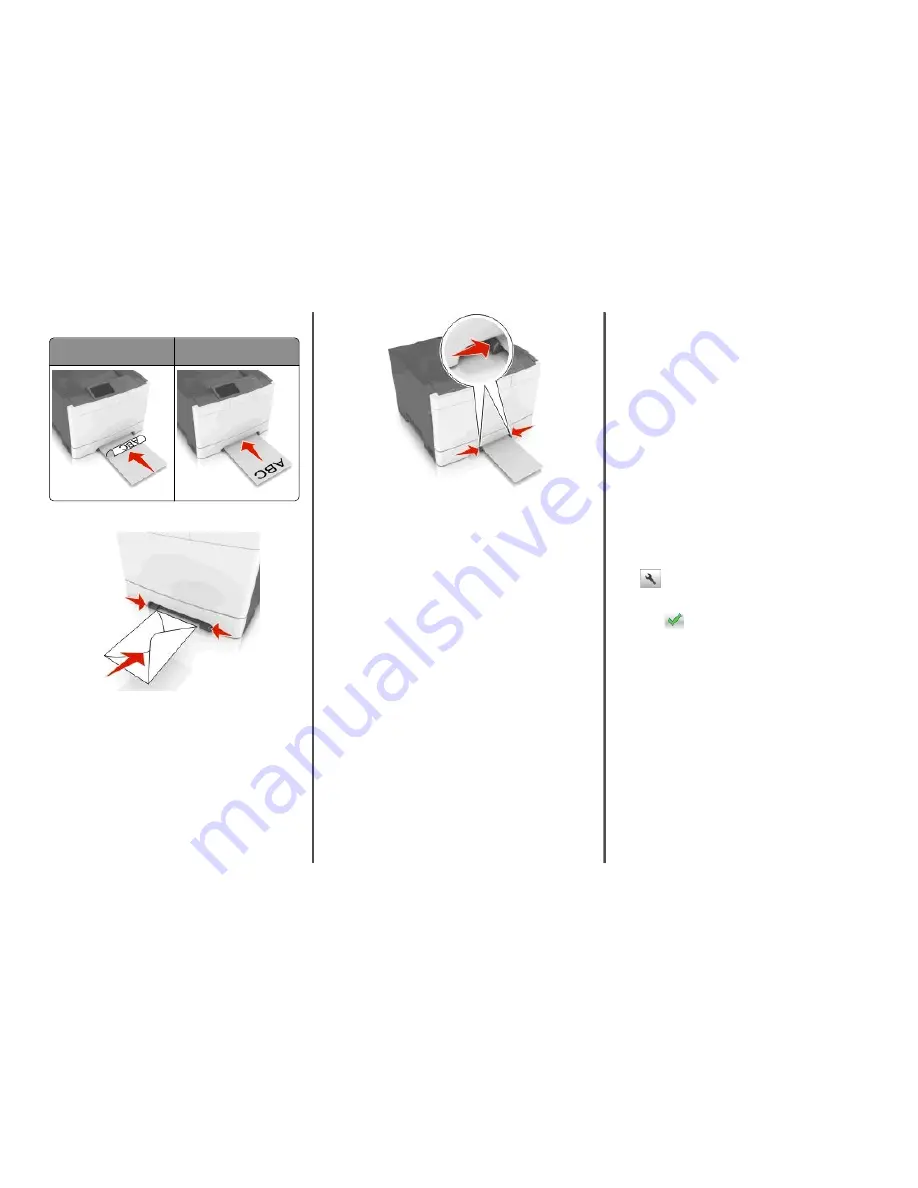
Note:
There are different ways for loading letterhead depending
on the mode of printing.
One
‑
sided printing using a
letterhead
Two
‑
sided printing using a
letterhead
•
Load envelope with the flap side up and against the right side
of the paper guide.
2
Feed paper into the manual feeder only to the point where its
leading edge can contact the paper guides.
Note:
To achieve the best possible print quality, use only
high
‑
quality media designed for laser printers.
3
Adjust the paper guides to the width of the paper loaded.
Warning—Potential Damage:
Do not force the paper into the
feeder. Forcing the paper may cause jams.
Linking and unlinking trays
Linking and unlinking trays
Note:
This feature applies only in network printers.
1
Open a Web browser, and then type the printer IP address in the
address field.
Notes:
•
View the printer IP address in the TCP/IP section in the
Network/Ports menu. The IP address appears as four sets of
numbers separated by periods, such as 123.123.123.123.
•
If you are using a proxy server, then temporarily disable it to
load the Web page correctly.
2
Click
Settings
>
Paper Menu
.
3
Change the tray settings to specify the paper size and type for the
tray.
•
To link trays, make sure the paper size and type for the tray
match with that of the other tray.
•
To unlink trays, make sure the paper size or type for the tray
does not
match with that of the other tray.
4
Click
Submit
.
Warning—Potential Damage:
Paper loaded in the tray should match
the paper type name assigned in the printer. The temperature of the
fuser varies according to the specified paper type. Printing issues
may occur if settings are not properly configured.
Creating a custom name for a paper type
Using the Embedded Web Server
1
Open a Web browser, and then type the printer IP address in the
address field.
Notes:
•
View the printer IP address on the printer home screen. The
IP address appears as four sets of numbers separated by
periods, such as 123.123.123.123.
•
If you are using a proxy server, then temporarily disable it to
load the Web page correctly.
2
Click
Settings
>
Paper Menu
>
Custom Names
.
3
Select a custom name, and then type a custom paper type name.
4
Click
Submit
.
5
Click
Custom Types
, and then verify if the new custom paper type
name has replaced the custom name.
Using the printer control panel
1
From the home screen, navigate to:
>
Paper Menu
>
Custom Names
2
Select a custom name, and then type a custom paper type name.
3
Touch
.
4
Touch
Custom Types
, and then verify that the new custom paper
type name has replaced the custom name.
Assigning a custom paper type
Using the Embedded Web Server
Assign a custom paper type name to a tray when linking or unlinking
trays.
1
Open a Web browser, and then type the printer IP address in the
address field.
Notes:
•
View the printer IP address on the printer home screen. The
IP address appears as four sets of numbers separated by
periods, such as 123.123.123.123.
•
If you are using a proxy server, then temporarily disable it to
load the Web page correctly.
2
Click
Settings
>
Paper Menu
>
Custom Types
.
6











